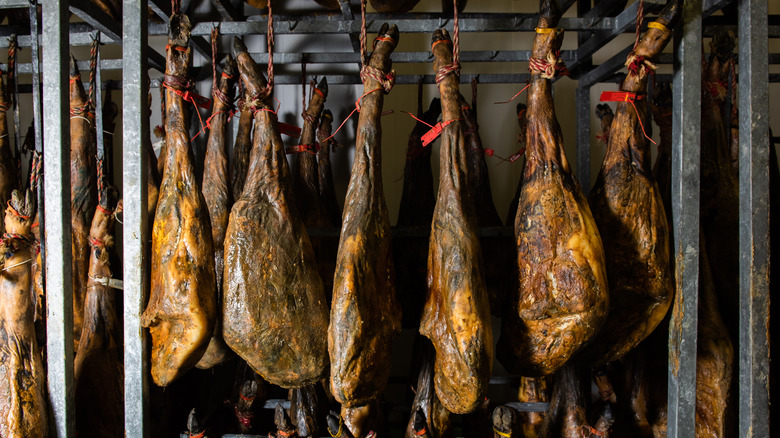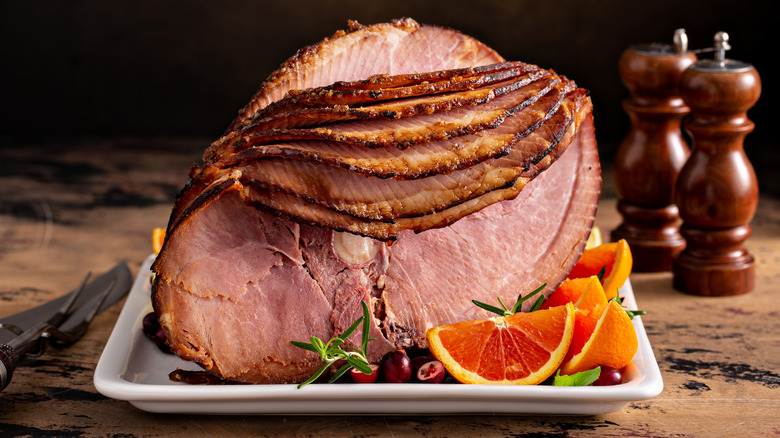Ham Vs Pork: What's The Difference?
You probably already know that the words "ham" and "pork" refer to the meat of the domesticated pig – Sus scrofa domesticus, for the scientifically minded — but you may not know the nuances of their definitions (via National Center for Biotechnology Information).
Brittanica writes that pork refers to any pig meat. Pork typically comes from hogs between six months and one year old and is often sold cured or processed into sausages. Although consuming pork is prohibited in both Judaism and Islam, the meat is widely popular in European, American, Asian, and Pacific cuisines. Ham, meanwhile, refers to a specific cut of pork. It's meat from the rear leg of the hog, often cured before consumption (via Britannica).
Not all products marked as "ham" are actual ham. In the United States, cured pork shoulders may be sold as "shoulder ham" or "picnic ham," but these alternate cuts don't taste the same. "Turkey ham," turkey thigh meat cured to taste like ham, is a mainstay in grocery stores — but meat aficionados aren't fans of the stuff either, according to "Kiplinger's Personal Finance." In 1980, the American Meat Institute (AMI) attempted to ban the use of the phrase "turkey ham" because it constituted "flagrant consumer deception." While the AMI protested the government's solution of requiring the phrase "cured turkey thigh meat" on packages of turkey ham, "turkey ham" stuck.
Ham is a cured cut of pork
According to the USDA, "ham" refers explicitly to a leg of pork cured with salt, brine, sodium nitrate, or other seasonings. Cured hams are often pre-cooked; some are smoked to add flavor and preserve the meat.
While most cured hams can be eaten straight from the package, "fresh" hams, or hams that have not gone through the curing process, should be cooked before serving. The USDA notes that fresh ham should be labeled with cooking instructions and labeled as "fresh" to differentiate it from cured ham.
Leite's Culinaria writes that cured, spiral-sliced hams are holiday classics, often served as part of a Christmas or Easter dinner. Since most hams are pre-cooked, you don't have to worry too much about the process of cooking the ham as long as you're able to keep it from drying out in the oven. However, not all hams are created equal. According to Brittanica, how the hogs are raised and the subsequent meat processing can significantly affect the taste. Kentucky hams are made from the meat of Hampshire hogs raised on a diet that includes beans and acorns; Virginia hams are typically cut from razorback hogs fattened on peaches and peanuts.

